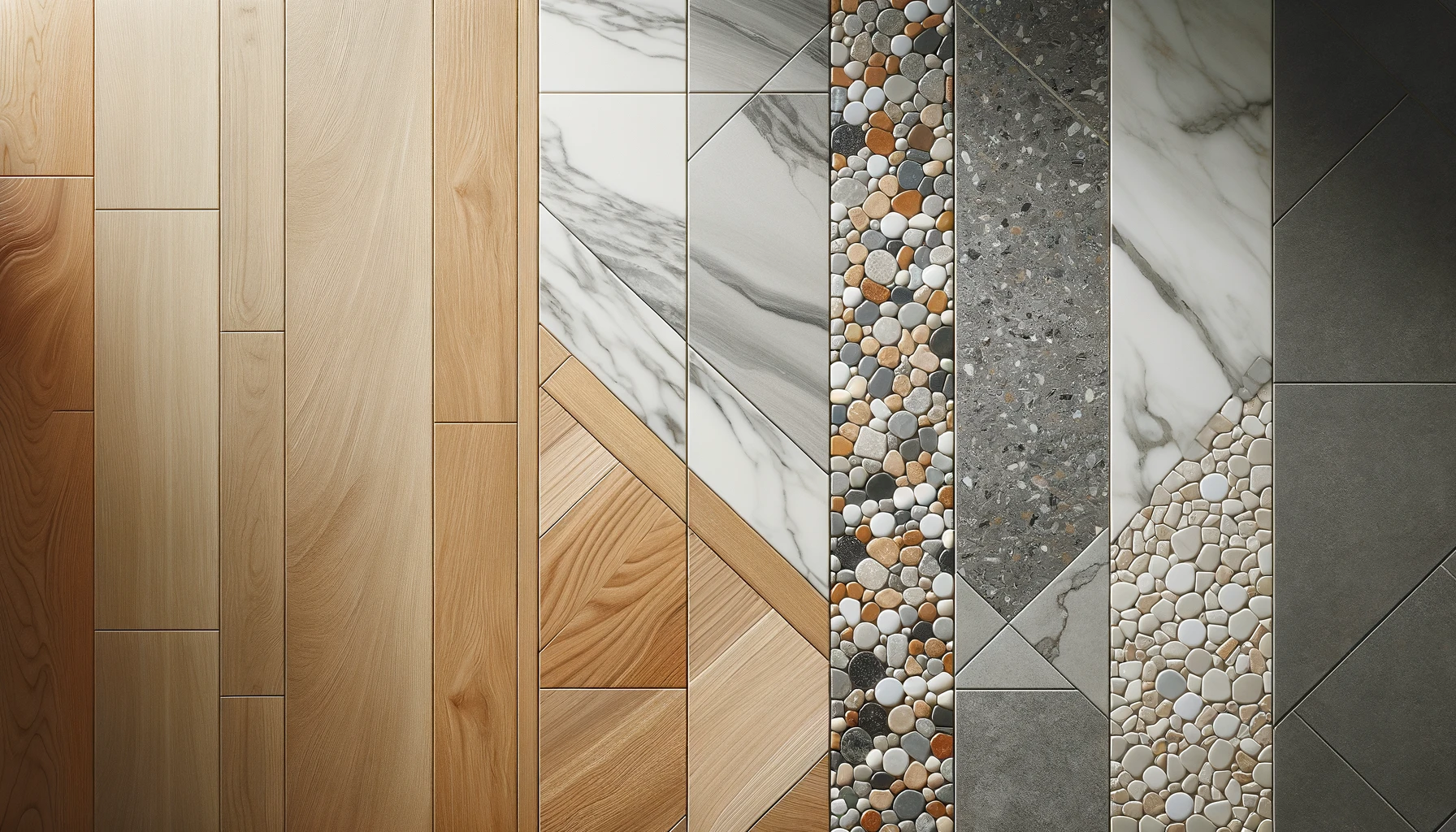Choosing the right flooring is a pivotal aspect of any space, be it a home, office, restaurant, or hotel. Flooring sets the design's tone, impacting comfort, durability, and maintenance. Thus, selecting the perfect floor isn't straightforward, requiring a balance of style, budget, climate, traffic, and purpose.
Let's delve into three popular flooring types: porcelain tiles, hardwood floors, and terrazzo tiles, exploring their creation, benefits, drawbacks, and suitability for various settings.
Porcelain Tiles
Porcelain, a refined ceramic, blends fine clay and minerals, fired under intense heat and pressure to craft a dense, hard material resistant to water, stains, scratches, and heat. Its variety in colors, sizes, shapes, patterns, and finishes can mimic natural materials like wood, stone, marble, or concrete.
Advantages:
- Easy to clean and maintain, requiring just regular sweeping or vacuuming and mopping.
- Durable and resilient, withstanding heavy traffic and wear without cracking or fading.
- Versatile for any room, indoor or outdoor, on various subfloors.
Disadvantages:
- While wear-resistant, they cannot be refurbished once worn.
- High durability but prone to breakage from heavy impacts.
- Noisy and slippery, potentially amplifying sounds and becoming slick when wet or polished.
Hardwood Flooring
Hardwood, or parquet, made from small wooden pieces in geometric patterns or long interlocking planks, offers a warm, elegant ambiance with its natural beauty and charm. Available in various wood species like oak, maple, walnut, or cherry, it comes in patterns like herringbone, chevron, basketweave, or brick.
Advantages:
- Elegant and unique, adding character and personality.
- Eco-friendly and renewable, reducing carbon footprints by absorbing CO2.
- Warm and inviting, retaining heat and providing a comfortable surface.
Disadvantages:
- Susceptible to damage and deterioration from moisture, temperature changes, insects, or fungi.
- Expensive and require specialized installation.
- Limited color and finish options, potentially not aligning with desired style or gloss preferences.
Terrazzo
Terrazzo, a composite flooring, combines cement, marble chips, granite, quartz, or other aggregates and pigments. Its tiles are formed by pouring the mixture into molds and then polished to reveal the colorful specks. This results in a smooth, shiny surface that reflects light and adds a stunning effect.
Advantages:
- Beautiful and artistic, with a vibrant, lively look enhancing mood and energy.
- Durable and resilient, resistant to cracks and chips under pressure or impact.
- Low porosity and permeability, water and stain-resistant, easily renewed by polishing.
Disadvantages:
- Expensive and require professional installation.
- Heavy and hard, potentially unsuitable for some subfloors or structures.
Conclusion
There's no one-size-fits-all in flooring selection. Weighing each option's pros and cons, considering personal taste and needs, is crucial.
However, for those valuing craftsmanship, longevity, and a lifetime of durability, terrazzo tiles stand out. Their unique, vibrant personality can make any space shine, offering excellent performance in durability, resistance, and maintenance, saving time, money, and effort in the long run.

